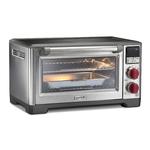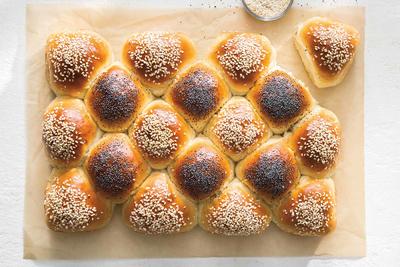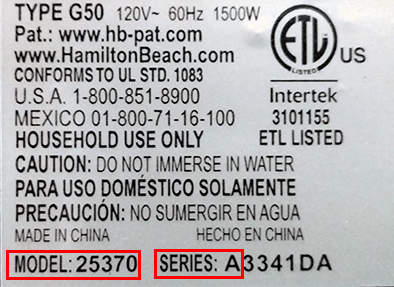Preparation Method
- Set aside 1 tablespoon of the butter in a small bowl to soften. Stir together the water, yeast, and ¼ teaspoon of the sugar in the bowl of a stand mixer. Cover the bowl with plastic wrap and let stand until the yeast is foamy, about 5 minutes.
- Meanwhile, heat 8 tablespoons of the butter and the milk in a saucepan over medium heat or in the microwave until the butter is melted (be careful not to let the milk simmer; it should just be hot enough to melt the butter).
- Add the milk-butter mixture to the yeast mixture, followed by the remaining sugar, eggs, and salt. Add 4½ cups of the flour and use a wooden spoon to stir everything together until the flour is moistened. Attach the dough hook to the stand mixer and mix on medium-low speed until the dough becomes sticky, about 1 minute. Increase the speed to medium and knead the dough until smooth and it just comes away from the sides of the bowl. (If the dough doesn’t come together, add the remaining flour, 1 tablespoon at a time, up to ¼ cup.)
- Adjust the oven rack to the lowest position and set the oven to PROOF. Turn the dough out onto a lightly floured surface and knead by hand a few times until the dough is smooth and supple. Use ½ tablespoon of the softened butter to grease a large bowl. Place the dough in the greased bowl and then lightly pat the top of the dough with the remaining ½ tablespoon softened butter. Cover the bowl loosely with plastic wrap and place in the oven to proof until the dough doubles in size, 1¼ to 1½ hours.
- Melt the remaining 4 tablespoons butter. Generously brush a 9-by-13-inch baking pan with some of the melted butter. Turn the dough out onto a lightly floured surface (the dough will be very soft and will deflate as soon as you touch it). Roll the dough into a 12-by-16-inch rectangle, then generously brush the dough with the melted butter. Use a sharp knife to cut the dough lengthwise into 4 strips, then cut the strips crosswise into 8 strips. You should have 32 rectangles (it’s okay if some of the corners are uneven, they will rise again during the second proofing).
- Working with 1 piece at a time, fold the rectangle in half lengthwise, leaving the bottom half about ¼ inch longer than the top half, then fold the longer piece up over the seam to close the roll, like an envelope. Starting in 1 corner of the pan, place the folded rectangle seam side down in the prepared pan. Repeat until all the dough rectangles are in the pan. Brush the tops lightly with the remaining melted butter. Cover loosely with plastic wrap and place in the oven to proof until puffed, about 20 minutes.
- Remove the pan from the oven and discard the plastic wrap. Set the oven to CONVECTION/BAKE 350°F. Place the pan in the oven and bake until the rolls are golden brown, about 20 minutes. Transfer to a wire rack to cool slightly. Serve warm or at room temperature, brushing with more melted butter (if you like).
Variations
Buttery Rolls with Flaky Salt
Make the dough and bake the rolls as instructed. While the rolls are baking, melt 2 tablespoons of butter. Remove the rolls from the oven and brush the melted butter on the hot rolls. Sprinkle 2 teaspoons Maldon sea salt flakes over the hot buttered rolls, crushing the flakes slightly between your fingers as you go. Serve warm or at room temperature.
Parker House Pullman Loaf
To make 2 Pullman loaves, make the dough as instructed. After the first proofing, turn the dough out onto a lightly floured surface and cut the dough in half. Brush two 9-inch loaf pans with melted butter. Roll out 1 of the pieces of dough into a 6-by-10-inch rectangle. With the short end facing you, brush the top with melted butter. Starting with the bottom end, fold the dough up to the middle then fold down the top end like a business letter. Using both hands, gently turn the dough over seam side down in the greased loaf pan. Brush the top with melted butter and cover loosely with plastic wrap. Repeat with the remaining dough. Place the loaf pans in the oven to proof about 20 minutes. Proceed with the recipe as instructed.
Pro Tip
Try sprinkling the Parker House Rolls with chopped fresh herbs, like rosemary or thyme, or spices, like cumin or caraway seeds. You can also flavor them with garlic by adding one smashed clove to the melted butter and letting it steep for a few minutes before brushing.





